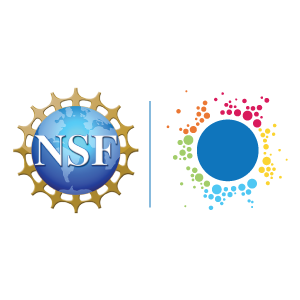In the recent webinar, Strengthening Capacity to Implement Culturally Responsive Practices, members of the NSF INCLUDES National Network explored issues related to the intersectionality of social, economic, and environmental dynamics, and culturally responsive practices effective for broadening participation in STEM.
This Network Spotlight highlights one of the presenters, Sarah Riley of the First2 Network. The First2 Network aims to improve the college enrollment rate and success of undergraduate STEM students, with an emphasis on rural first-generation students in West Virginia though their first 2 years of college. Learn more about First2 Network’s work through this video.
During the webinar, Sarah discussed building the First2 Network, and challenges her team faced along the way. Keep reading below to learn from Sarah more about the importance of building a collaborative culture, and the need to keep student voice at the center of this important work.
Contributed by Sarah Riley
Building our collaborative culture
While building our network, we found ourselves faced with the challenge of channeling high passion and high engagement into effective and efficient collaboration. In order to build a grassroots movement across a large network, we needed to look at how to build the culture of the network itself, including determining our values and learning how to make decisions together. Through the process, we learned how much time you have to invest to build trust and relationships.

As we started to build this culture, we found a lack of connectivity between our different silos: community organizations, higher education, k-12, students, and families. We do not always think about problems in the same way, so we needed to create a common language in order to all work together effectively. We held cross-sector trainings to learn across content areas and share the different knowledge we all have. For example, as a community organizer, I have had to learn a lot about what it is like to work within a higher education setting.
Our team has been able to learn a lot from the way that we work within our different settings. We each bring a unique perspective, and while we don’t always see things the same way, that diversity of perspectives makes us stronger.
Putting student voice at the center of our work
First2 Network was founded on the vision of having first-generation students as integral partners in the network and be right at the core of problem solving.
We came into this work with a lot of assumptions about rural students and our network overall. We believed rural students would have a hard time in college because they missed their homes, having moved from a close-knit community where they knew everybody to a place where they knew no one. But we learned this is not true and there is actually very little difference between rural and non-rural students in this regard.
We did find some significant differences, including that rural students report more confidence than non-rural students do in terms of knowing where to go help with coursework. We also found that one of the barriers to success for first-generation college students, rural or not, was overconfidence.
Overall, we found that students’ reporting levels did not match the cultural assumptions that we had. So, we adapted. We started focusing on leadership development and education, including being explicit about our findings. We focused on relationship building, inclusive facilitation and we doubled down on student voice.
We made sure that student voice was at the center of our work. It helped mitigate our burnout in the work, it helped increase network engagement, it helped to build distributed leadership, and it led to the generation of great ideas. By prioritizing student voice, we continue to put equity and listening to the people most affected by the work at the center of solving the problem.
***
Thank you to Sarah Riley for sharing some of the challenges of the First2 Network and ways they are working to address those challenges. Connect with Sarah through the member directory so that as the NSF INCLUDES National Network, we can continue to learn and work together.

